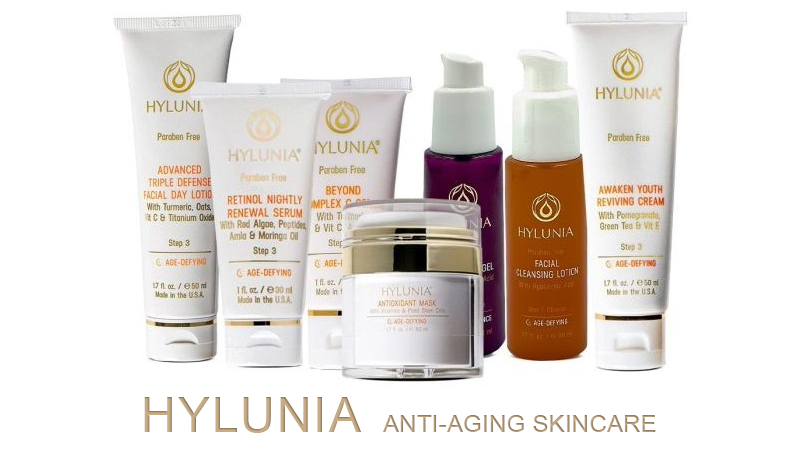
We’ve all heard about people who seem to age “gracefully” as though they possess some magic gene that keeps their skin fresh and smooth. But aging isn’t a simple story of good genes or bad luck. Instead, it’s a complex mix of what we inherit and how we live. Both environmental and genetic factors play a role in how our skin ages, and understanding these influences can help us make smarter choices for our skin.
Contents
Understanding Genetic Aging: What’s Written in Your DNA
Genetic factors, or “intrinsic aging,” refer to the natural, biological processes that affect our skin over time. This type of aging is hardwired in our DNA and tends to occur no matter how careful we are with sunscreen or diet. Our genetic blueprint influences how quickly our skin produces collagen, how well it retains moisture, and even how it handles sun exposure.
The Role of Collagen and Elastin Production
Our bodies produce two proteins—collagen and elastin—that keep skin firm and elastic. Think of collagen as the building blocks and elastin as the springs that allow our skin to stretch and snap back. As we age, our body’s production of collagen and elastin naturally slows down. This slowdown is largely genetic; some people just lose these proteins faster than others, leading to wrinkles and sagging earlier in life.
In other words, if you’ve inherited a slower collagen production rate, you might notice fine lines and wrinkles sooner than someone with genetically “fast” collagen production. This aspect of aging is difficult to prevent entirely but can be managed with skincare that boosts collagen.
Skin Thickness and Texture: A Genetic Gift (or Curse)
Skin thickness is another genetically determined trait that affects how we age. People with thicker skin often show fewer wrinkles, as they have more “padding” that can withstand years of wear and tear. On the other hand, those with thinner skin may see wrinkles and lines more prominently because their skin structure doesn’t provide as much support. If you have thinner skin, you might need to be extra diligent with sun protection and moisturization.
Melanin Levels and Skin Aging
Melanin, the pigment that gives skin its color, offers some natural protection against sun damage. People with more melanin tend to show fewer signs of aging from sun exposure, as their skin is better equipped to handle UV rays. This genetic advantage means that darker skin tones often develop wrinkles and pigmentation issues more slowly than lighter skin tones, though they are still susceptible to other types of aging, such as sagging and dullness.
Environmental Aging: The Impact of Lifestyle Choices and Exposure
While genetics lay the foundation, lifestyle factors—or “extrinsic aging”—play a major role in how our skin ages over time. External elements like sun exposure, pollution, smoking, and even diet can speed up aging, sometimes more dramatically than genetic factors.
Sun Exposure: The Biggest Environmental Factor
Sun exposure is the leading cause of premature aging and is responsible for the majority of skin changes we associate with aging. UV rays penetrate the skin and break down collagen fibers, weakening the skin’s support structure and leading to wrinkles and sagging. Over time, sun exposure also causes pigmentation changes, like age spots, and rougher skin texture.
Using sunscreen daily, wearing protective clothing, and seeking shade are all effective ways to reduce sun-induced aging. Remember, sun damage accumulates over time, so even a few minutes of exposure each day adds up in the long run.
Pollution: The Silent Skin-Ager
Pollution is another sneaky culprit that contributes to skin aging. Airborne pollutants like car exhaust, industrial emissions, and even cigarette smoke release free radicals that attack skin cells, leading to inflammation and collagen breakdown. This damage shows up as fine lines, uneven skin tone, and dullness.
Antioxidants like vitamin C, vitamin E, and green tea extract can help protect skin from free radical damage caused by pollution. Look for skincare products that contain these ingredients to give your skin an extra layer of defense.
Smoking: Accelerating Aging from the Inside Out
Smoking is one of the fastest ways to age your skin, no ifs, ands, or buts about it. Nicotine narrows blood vessels, reducing oxygen and nutrient flow to the skin. This process weakens collagen and elastin fibers, causing wrinkles and a sallow, uneven complexion. Plus, the repeated facial movements from smoking, like pursing your lips, can lead to wrinkles around the mouth.
- Reduced blood flow: Leads to skin looking dull and tired.
- Loss of collagen and elastin: Speeds up wrinkling and sagging.
- Free radicals: Damages skin cells, making skin more vulnerable to aging.
If you’re a smoker looking to improve your skin, quitting is the best thing you can do for long-term skin health.
Diet and Hydration: Fueling Skin from the Inside
What we put into our bodies shows up on our skin, and diet can have a huge impact on how our skin ages. A balanced diet rich in antioxidants, healthy fats, and hydration helps skin stay resilient, while poor dietary choices can accelerate aging.
Antioxidants: Nature’s Skin Protectors
Antioxidants combat free radicals, the unstable molecules that damage skin cells and accelerate aging. Eating foods high in antioxidants, like berries, leafy greens, and nuts, can support your skin from within. Incorporating antioxidant-rich skincare products is another effective way to protect your skin from environmental stressors.
Hydration and Skin Health
Hydrated skin looks plumper and more youthful. Drinking enough water is essential for overall health, but it’s also vital for maintaining skin elasticity. Dehydrated skin is more prone to wrinkles and sagging, as it lacks the moisture needed to stay resilient. Adding hydrating ingredients like hyaluronic acid to your skincare routine can further support skin’s moisture levels.
How to Find Balance: Genetic Realities vs. Environmental Choices
While we can’t change our genetic code, we do have some control over how quickly our skin shows signs of aging. Here’s how to balance both factors:
Focus on Sun Protection
Whether you have genetically thicker skin or naturally high levels of melanin, sun protection is a must. Applying sunscreen daily, even on cloudy days, can help prevent sun damage that leads to wrinkles, sagging, and age spots. Think of sunscreen as your skin’s best friend in the fight against premature aging.
Incorporate Antioxidants into Your Routine
Antioxidants neutralize free radicals, which are responsible for much of the environmental aging we experience. Choose products with ingredients like vitamin C, green tea, and niacinamide, and eat foods rich in these nutrients to support your skin’s natural defenses.
- Topical Antioxidants: Look for serums with vitamins C and E for daily use.
- Dietary Antioxidants: Include foods like berries, spinach, and nuts in your diet to protect skin from the inside out.
Choose Skincare for Your Skin Type
Your genetic makeup influences whether you have oily, dry, or combination skin, which in turn affects how you should care for your skin. For instance, those with drier skin may need richer moisturizers to support the skin barrier, while oily skin types may benefit from lighter, non-comedogenic products.
Embracing Healthy Skin Habits
In the end, while we may be working with a genetic framework, our lifestyle choices play a big role in how gracefully our skin ages. By understanding and embracing both our genetic and environmental realities, we can take steps to protect and nurture our skin over time. With a bit of balance and care, it’s possible to maintain healthy, resilient skin that reflects the life you live rather than just the years on the calendar.

